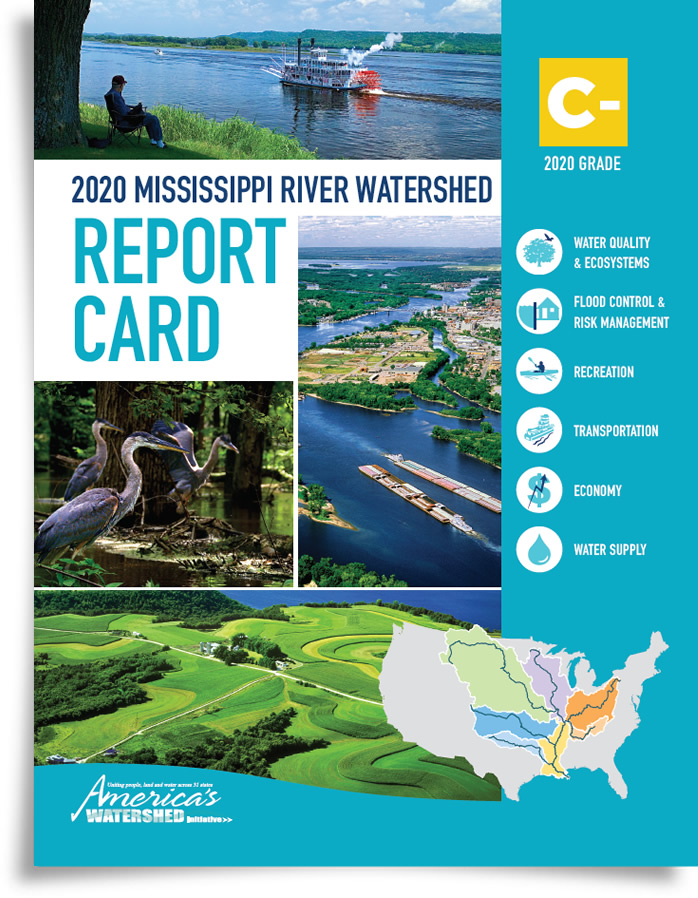About the Report Card
The Mississippi River Watershed Report Card affords a clear picture of the health of the Mississippi River Watershed.The Mississippi River Watershed Report Card affords a clear picture of the health, condition, and contributions of America’s watershed, providing local, state and national decision makers and stakeholders with the information they need to better manage and support it.
AWI’s report card assesses the health of the Mississippi River Watershed across six goal areas – Water Quality and Ecosystems, Flood Control and Risk Management, Recreation, Transportation, Economy, and Water Supply.
The Report Card also grades the five major sub-basins—the Upper Mississippi River, Lower Mississippi River, the Ohio and Tennessee Rivers, the Arkansas and Red Rivers, and the Missouri River – as well as the Gulf of Mexico.
Report Card Goals
The goal of the Mississippi River Watershed Report Card is simple – provide decision makers, watershed leaders and the public with easy-to-understand information about the state of the watershed’s health, to aid them in developing a collaborative approach to managing America’s Watershed. From the start, AWI had three key objectives for the report card:
- Develop a report card supported by data that will help to identify successes, opportunities for improvement, and areas needing additional research throughout the watershed and its basins;
- Engage and bring together key leaders, stakeholders and experts representing all of the basins and sectors to advance broad goals for the watershed;
- Use the report card as a tool to identify opportunities for collaboration and a shared vision for the watershed, as well as to educate Americans about the health and importance of the watershed in their lives and communities.

